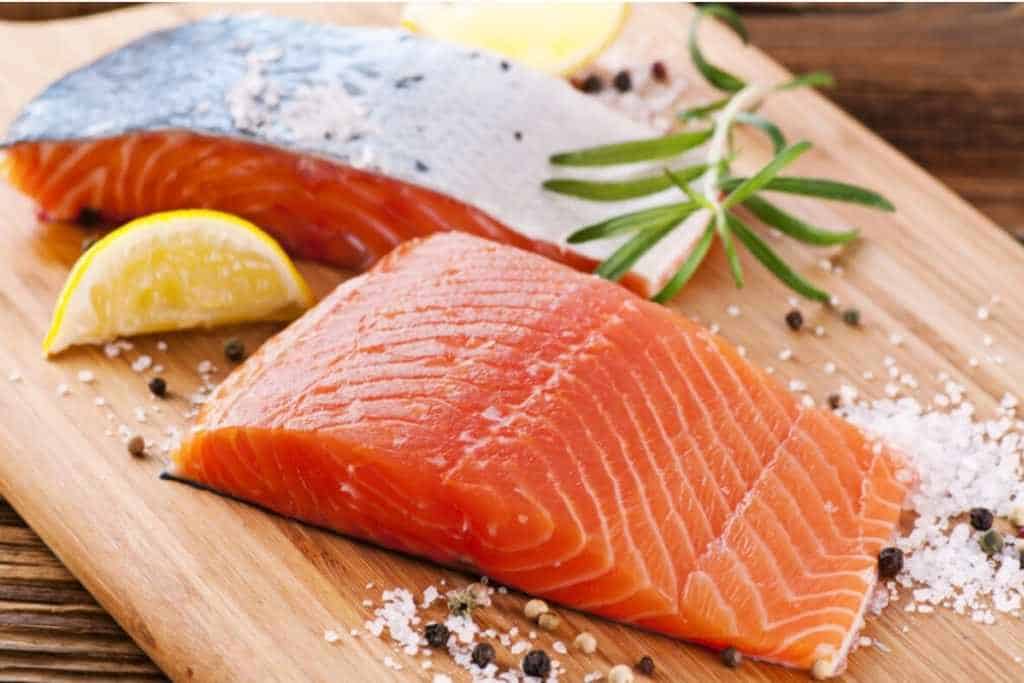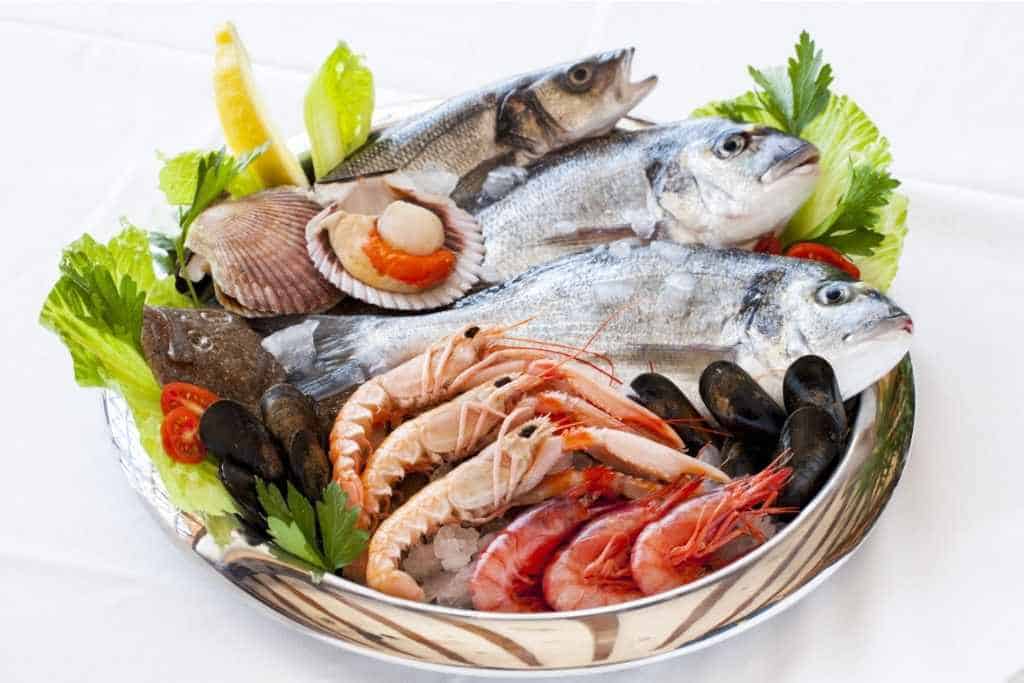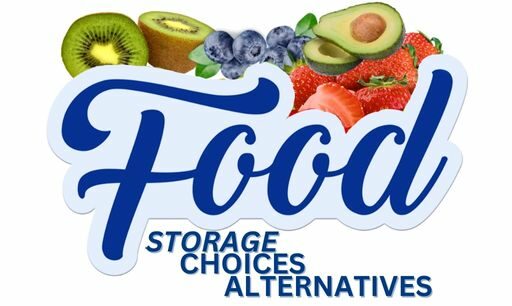Coho Salmon vs Sockeye: What’s the Difference?
There are so many different types of salmon like coho and sockeye. Therefore, let’s examine the main differences between the two salmon.
The main difference between coho and sockeye salmon is coho has more minerals and omega-3 fatty acids than sockeye. Sockeye have a stronger fish-like taste than coho and is a darker shade of red. Coho’s texture is more soft than sockeye’s firmer more meaty flesh.
This article will dive into the main differences between the two fish starting with a side-by-side nutrient comparison. In addition, I’ll examine their tastes, textures, costs, mercury levels and if one can substitute for the other.
Coho Salmon vs Sockeye: Nutrition Comparison

As a Certified Health Coach many clients ask me about food comparisons including salmon. I purchase and consume salmon every week. Therefore, I have researched this topic in the past and present. Let’s examine them closely.
The following table shows the nutrients contained in 4 ounces of raw coho and sockeye salmon.
| Nutrient | Coho Salmon, raw
(4 Ounces) |
Sockeye Salmon, raw
(4 Ounces) |
| Calories | 166 | 149 |
| Fat | 6.7 g | 5.3 g |
| Saturated Fat | 1.4 g | 0.9 g |
| Cholesterol | 51 mg | 58 mg |
| Protein | 25 g | 25 g |
| Omega-3 | 1.49 g | 0.96 g |
| B-6 | 0.6 mg | 0.8 mg |
| B-12 | 4.7 mcg | 5.3 mcg |
| Thiamin | 0.12 mg | 0.15 mg |
| Riboflavin | 0.15 mg | 0.23 mg |
| B5 | 0.9 mg | 1.2 mg |
| Iron | 0.6 mg | 0.4 mg |
| Niacin | 8.1 mg | 9.6 mg |
| Folate | 10.2 mcg | 6.8 mcg |
| Potassium | 479 mg | 416 mg |
| Magnesium | 35 mg | 34 mg |
| Phosphorus | 297 mg | 291 mg |
| Calcium | 40.8 mg | 10.2 mg |
| Zinc | 0.46 mg | 0.52 mg |
| Selenium | 41.4 mcg | 33.8 mcg |
According to the above table, coho and sockeye salmon have similar nutritional value, making it extremely difficult to choose a winner.
Coho salmon is healthier than sockeye due to its higher number of omega-3 fatty acids. Coho provides 55% more of the heart healthy omega-3. Coho contains more iron, folate, potassium, magnesium, phosphorus, calcium and selenium than sockeye salmon. Sockeye contains more cholesterol than coho salmon.
It’s the omega-3 fatty acids which give coho the slight edge over sockeye. Sockeye is no slouch and provides many of the same nutrients. Sockeye contains more B6, B12, thiamin, riboflavin, B5, niacin and zinc than coho salmon.
Why is omega-3 fatty acids the tie breaker between the two fish? Omega-3s help lower the risk of heart attack, stroke, high blood pressure and several other heart-related issues ((National Center for Biotechnology: Marine Omega-3 Supplementation and Cardiovascular Disease)).
This is primarily because omega-3s keep the arteries strong and healthy. They also help keep bad cholesterol levels low3.
Coho contains approximately 55% more omega-3 fatty acids than sockeye. In addition, coho provides four times the amount of calcium and 50% more folate. The remaining vitamins and minerals are close and similar, whether coho or sockeye have more.
I wrote another article comparing two salmon powerhouses, Keta and Sockeye. How does sockeye compare in this battle? Check it out here, Keta vs Sockeye Salmon: What’s The Difference?

Coho Salmon vs Sockeye: Taste, Texture and Appearance
If you want to get a general idea about the taste, texture and appearance of more salmon, check out the video towards the end of this article.
Taste
Sockeye salmon has a rich flavor and very pronounced. They smell and taste very similar to many other varieties of salmon and have a pronounced fishy flavor.
If you really like other salmon varieties, then you will enjoy the flavor of sockeye salmon. Sockeye has a more pronounced fishy flavor compared to coho salmon.
For those that are not a big fan of intense salmon flavor, the Coho salmon may be a better option.
Coho salmon is good to eat due to its lower fat and oil content which gives it a milder taste. Although the Coho’s flavor is milder than sockeye and most other salmons, it’s still more flavorful than a mild white fish like halibut or cod.
My Own Poll and Taste Test at Home
I wanted to get the opinion of real people like you and me. Therefore, I wanted to conduct my own research and contacted my clients, readers and members of food groups I belong to. I asked them which salmon they preferred.
- 47% said they preferred the taste of sockeye.
- 41% said they preferred the taste of coho.
- 12% said they had no preference, or it depended on their mood.
I then set up a blind test taste at my home. I prepared both salmons the same way using the same seasonings. Three out of four people, 75% chose the sockeye salmon. They said the flavor was better.
Texture
The texture of these two salmons is slightly different as well. Coho salmon is very soft when it is raw. Once it has been cooked, it is much more flakey. If it feels firm, you probably haven’t cooked it right.
Sockeye salmon on the other hand has a firm and compact meaty flesh. It is also very thin and lean. Sockeye salmon only flakes a little bit once it has been cooked.
Appearance
The main differences between these two salmons are what they look like. Coho salmon has a pretty light and pink flesh. When cooked, it stays about the same color and might get a little lighter in color.
The flesh of sockeye salmon has a bright and vibrant red color to it when it hasn’t been cooked4. Once you cook sockeye salmon, it may lighten up and bit and turn a pinkish color. The inside may still be fairly red.
Sockeye gets its deep red color from their diet. They eat crustaceans and plankton5. The more they eat of these two, the more red and darker the sockeye flesh becomes ((University of Washington: Studying Sockeye Salmon)).
Coho and Sockeye: Substitutions

Your local grocery store may not always have the type of salmon you’re looking for. If you are looking for a substitution let’s take a look.
Coho salmon and sockeye salmon can substitute for each other when cooking seafood, although they have different textures and tastes. They both can be cooked using the same methods like pan-fried, slow-roasted, poached, baked or searing in a pan.
Any other type of dark red salmon will also work. Substitutions for coho salmon can include regular pink salmons.
If they are out of all types of salmon at the store, you can substitute other fish. Those substitutes include:
- Swordfish
- Mahi-mahi
- Albacore
- Marlin
- Striped bass
- Trout
- Arctic char
- Cod
Coho Salmon and Sockeye: Mercury Levels
The Food and Drug Administration (FDA) and the Environmental Protection Agency (EPA) have issued warnings regarding mercury levels. They also provide recommendations about how often people should consume6.
The FDA established a list of fish that are best choices, good choices and ones to avoid.
Coho salmon and sockeye have similar levels of mercury. Both fish are listed on the FDA’s best choices of fish to consume regarding their mercury levels.
Always check with a physician prior to eating new foods or changing your dietary habits.
If you’re interested in finding out how the coho salmon compared to king salmon, check out my article here, Coho Salmon vs King: What’s The Difference?
Coho Salmon vs Sockeye: Prices
When you are purchasing coho salmon or sockeye, be sure to check the label to see if the fish is caught in the wild or farm-raised. It makes a difference with the price.
Coho salmon is slightly more expensive than sockeye. The average cost for wild caught coho salmon is $19.99 per pound while the average cost for wild-caught sockeye is $18.83 per pound. The cost will vary depending on location, whether it is farm-raised or wild-caught, fresh or frozen.
I visited and checked my local shoprite and stop and shop supermarkets and found coho and sockeye. The following are the prices:
- Wild Coho fillet
- $19.99 per pound
- Wild Alaskan Sockeye salmon
- $20 per pound.
- Wild Alaskan Sockeye salmon
- $18 per pound
I checked FreshDirect and found the following prices:
- Wild Coho fillet
- $19.99 per pound
- Wild Sockeye fillet
- $18.50 per pound
Eating Coho Salmon or Sockeye on These Diets
You may be reading this article and wonder if coho, sockeye or any salmon will work with the diet you want to try or are currently doing. Below, we’ll go over various diets and talk about whether or not salmon works for it and why.
Paleo
You can eat coho salmon or sockeye on a paleo diet. You should try to find more wild-caught salmon instead of farm-raised salmon because paleo has a focus on omega-3 intake and wild-caught fishes may have more omega-3s.
Vegan
You can’t eat any salmon on a vegan diet. Some substitutes for salmon that are vegan friendly include marinated carrots, algae, and jackfruit.
Low-Carb
If you are on a low-carb diet, salmon is the way to go. Both coho and sockeye salmon do not have any carbs, so they are a great meal to have while following a low-carb diet. Most other fish and kinds of seafood also have little or no carbs as well.
Ultra-Low-Fat
For the low-fat diet, you are allowed to eat salmon, and it may even be recommended as one of the main foods for this diet. Although coho, sockeye and other salmons have a variety of grams of fats, they have a lot of omega-3s which is the main focus for the low-fat diet.
Atkins
Atkins has a big focus on protein as well as cheeses. Coho salmon and sockeye are great sources of protein so it is perfect for the Atkins diet as well.
A good meal to make for this diet is a buttery salmon and asparagus because it meets the requirements for Atkins and all of these taste really great together.
Zone
The zone diet does allow salmon as one of the foods you can eat because it isn’t high in sugars, starches or carbohydrates. Since it is full of protein, omega-3s and vitamins it is a perfect meat to eat on the zone diet.
Intermittent Fasting
Salmon is perfect for intermittent fasting because of all the valuable nutrients it provides for you before you begin your fast.
One of the most ideal meals for intermittent faster is salmon served over rice. Therefore, there’s no doubt you can eat coho or sockeye while you’re on the intermittent fasting diet.
Keto
Salmon is a keto-friendly food due to its richness in vitamins B6, B12, and potassium. Since it is also carb free, it is great for the keto diet
If you have any questions to ask me about this article don’t hesitate to comment below or email us. You can find an email on our contact page.
Read Next – More Salmon vs Salmon Articles!
Sockeye vs King Salmon: A Complete Comparison
Pink vs Red Salmon: What’s The Difference?
Atlantic vs Pacific Salmon: What’s The Difference?
Atlantic vs Wild Salmon: Which Is Better?
Farm Raised Salmon Compared To Wild Caught Salmon
- Nutrition Value: Fish, raw, sockeye, salmon [↩]
- Nutrition Value:Nutrition Value: Fish, raw, wild, coho, salmon [↩]
- National Center for Biotechnology Information: Benefits of salmon eating on traditional and novel vascular risk factors in young, non-obese healthy subjects [↩]
- Britannica: Sockeye salmon [↩]
- Alaska Department of Fish and Game: Sockeye Salmon [↩]
- FDA: Advice about Eating Fish [↩]
